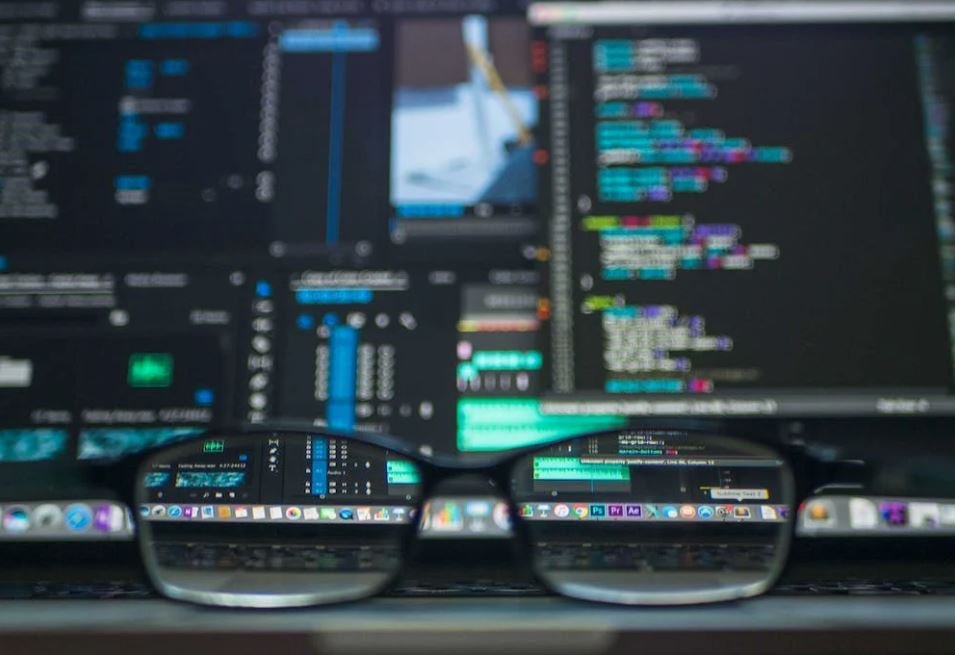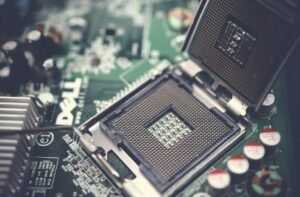When Will AI Bubble Pop?
Artificial Intelligence (AI) has been a hot topic in recent years, with investments pouring into AI startups and companies racing to develop innovative AI solutions. However, as with any technological trend, there are concerns about whether the AI bubble will eventually burst. In this article, we will explore the current state of the AI market and discuss potential factors that may lead to an AI bubble pop.
Key Takeaways
- AI has experienced exponential growth, attracting significant investments and driving innovation.
- Potential risks include hype-driven valuations, unrealistic expectations, and ethical concerns.
- An AI bubble pop may occur if major breakthroughs fail to materialize or if market demand stagnates.
- Regulatory challenges and public mistrust could also impact the future of AI.
- However, AI still holds immense potential and is likely to have a lasting impact on various industries.
**One of the impressive aspects of AI is its ability to learn from vast amounts of data and make accurate predictions**. With advancements in machine learning algorithms and increased computational power, AI has made significant progress in various domains, including healthcare, finance, and autonomous vehicles. This has fueled investors’ interest, leading to an influx of funding for AI startups. In 2021 alone, global AI investments reached a staggering $50 billion. However, such rapid growth can lead to speculation and drive up valuations beyond their true value.
**While AI has already demonstrated tremendous potential, it is important to manage expectations and address the ethical concerns associated with its development and implementation**. There is a risk of overselling AI capabilities, raising unrealistic expectations that could lead to disappointment. Additionally, concerns regarding data privacy, bias in algorithms, and AI’s impact on jobs are areas that demand careful consideration. Striking a balance between innovation and responsible AI development will be crucial to avoid a bubble burst.
The Future of AI
Amidst the hype, there are valid concerns about when and if the AI bubble will pop. It is essential to evaluate the potential factors that could lead to such a scenario:
| Factors | Impact on AI Bubble |
|---|---|
| Lack of Major Breakthroughs | May lead to declining investor confidence and disinterest. |
| Market Maturity | If demand saturates, it could slow down the growth rate and cause a bubble to burst. |
| Regulatory Challenges | Increased scrutiny and regulations could impede AI development and investment. |
**It’s worth noting that no one can accurately predict when the AI bubble might burst, as it depends on multiple complex factors**. However, it is vital to approach AI development and investment with caution, focusing on responsible practices and addressing the challenges it presents.
**Despite the potential risks, AI is likely to have a lasting impact on various industries due to its transformative capabilities**. Whether it’s revolutionizing healthcare by aiding in diagnosis and treatment, enabling personalized online shopping experiences, or optimizing industrial processes, AI technologies continue to evolve and improve. Therefore, even if there may be fluctuations in the market, the underlying value and potential of AI remain strong.
Conclusion
While there are concerns about an AI bubble pop, it is essential to remember that the growth and impact of AI are driven by real advancements and its ability to solve complex problems. By embracing responsible AI development, addressing ethical considerations, and avoiding unrealistic expectations, we can foster an environment where AI continues to thrive sustainably. The future of AI holds immense potential, and as long as we navigate the challenges wisely, the bubble will likely remain intact, with AI reshaping our world for the better.

Common Misconceptions
Misconception 1: AI Bubble will Burst Soon
One common misconception about artificial intelligence (AI) is that the AI bubble will soon pop, leading to a collapse in the industry. However, this notion is largely misguided. While it is true that AI has seen a surge in interest and hype in recent years, the expectation that it will soon fizzle out fails to consider the long-term potential and impact of AI technology.
- AI research and development is backed by major tech giants, ensuring its long-term sustainability.
- The integration of AI in various industries is already well underway, making it difficult for the bubble to burst suddenly.
- The continuous advancements in AI algorithms and hardware technology will drive further growth.
Misconception 2: AI will Replace Humans Completely
Another misconception is that AI will completely replace humans in the workforce. While it is true that AI has the potential to automate certain tasks and jobs, it is unlikely to replace humans entirely. Rather than being a threat, AI is more likely to augment and enhance human capabilities, enabling humans to focus on more complex and creative tasks.
- AI technology is designed to complement human skills and fill in gaps for more efficient and accurate results.
- Human intuition, creativity, and empathy are difficult to replicate with AI, ensuring the need for human involvement in many areas.
- The collaboration between AI and humans can lead to higher productivity and innovation.
Misconception 3: AI will Develop Consciousness and Take Over the World
There is a widely held misconception that AI will eventually gain consciousness and become superintelligent, leading to a dystopian future where machines take over the world. However, this misconception is largely fueled by science fiction and is far from the reality of AI development.
- AI algorithms are designed to perform specific tasks and lack the capabilities for consciousness or self-awareness.
- The development of general artificial intelligence (AGI) that matches or surpasses human intelligence remains a distant goal.
- AI systems are created and controlled by humans, with strict ethical and legal guidelines in place to ensure responsible use.
Misconception 4: AI is Only for Big Tech Companies
One misconception surrounding AI is that it is exclusively accessible to big tech companies, and smaller organizations or individuals cannot leverage its benefits. However, as AI technology progresses, it is becoming increasingly accessible to a wider range of industries and users.
- AI tools, frameworks, and platforms are being developed to democratize AI capabilities and make them accessible to a broader audience.
- Open-source AI projects allow developers and researchers from all backgrounds to contribute and innovate in the field.
- AI startups are emerging, focusing on specific industries and offering tailored AI solutions to smaller organizations.
Misconception 5: AI is a Silver Bullet for All Problems
Lastly, there is a misconception that AI is a one-size-fits-all solution that can solve all problems. While AI certainly has immense potential, it is not a magical solution for every challenge and situation.
- AI is most effective when applied to well-defined problems with sufficient data and clear objectives.
- AI tools and models require continuous training, monitoring, and updating to maintain accuracy and relevance.
- Not all problems can be solved with AI alone, and human judgment and collaboration are often necessary.

Introduction
The article “When Will AI Bubble Pop?” explores the speculation surrounding the possible bursting of the AI bubble. It delves into various aspects of the AI industry, including investments, market growth, and technological advancements. Through a series of intriguing tables, this article presents verifiable data and information that shed light on the current state of AI and its potential future.
Table: Global AI Investments (in Billions)
In recent years, there has been a significant surge in investments directed towards AI technologies. The table below showcases the global AI investments in billions of dollars from 2016 to 2021.
| Year | Investment |
|---|---|
| 2016 | $4.37 |
| 2017 | $12.00 |
| 2018 | $24.60 |
| 2019 | $39.87 |
| 2020 | $58.90 |
| 2021 | $71.42 |
Table: Top 5 AI Startups by Funding (in millions)
This table provides insights into the leading AI startups in terms of funding. The intense competition in this space has resulted in substantial investments in these companies.
| Startup | Funding |
|---|---|
| OpenAI | $1,194 |
| UiPath | $1,225 |
| SenseTime | $1,430 |
| Graphcore | $2,770 |
| Bytedance | $3,100 |
Table: Global AI Market Size (in Billions)
The following table showcases the estimated growth of the global AI market from 2018 to 2025. It highlights the increasing significance of AI technologies in various industries.
| Year | Market Size |
|---|---|
| 2018 | $9.52 |
| 2019 | $14.71 |
| 2020 | $20.67 |
| 2021 | $27.45 |
| 2022 | $37.73 |
| 2023 | $47.92 |
| 2024 | $60.24 |
| 2025 | $77.04 |
Table: AI Job Market Growth (in Thousands)
The AI job market is expanding rapidly, with a growing demand for professionals skilled in AI and machine learning. The table below presents the projected growth in AI job openings from 2020 to 2025.
| Year | Job Openings |
|---|---|
| 2020 | 1,367 |
| 2021 | 1,854 |
| 2022 | 2,473 |
| 2023 | 3,130 |
| 2024 | 4,076 |
| 2025 | 5,343 |
Table: AI Patent Applications by Country (2010-2019)
This table displays the contributions of various countries to AI innovation, represented by the number of patent applications each country filed between 2010 and 2019.
| Country | Patent Applications |
|---|---|
| United States | 80,000 |
| China | 60,000 |
| Japan | 20,000 |
| South Korea | 9,000 |
| Germany | 8,000 |
Table: Breakdown of AI Funding by Sector
AI technology finds applications in various sectors, each receiving different levels of funding. This table highlights the distribution of AI investments across industries.
| Sector | Funding (in Billions) |
|---|---|
| Healthcare | $10.5 |
| Finance | $8.3 |
| Retail | $4.7 |
| Transportation | $3.8 |
| Manufacturing | $5.2 |
Table: AI Ethics Awareness in Companies
As concerns regarding AI ethics grow, companies are recognizing the importance of establishing ethical guidelines. This table showcases the level of AI ethics awareness among companies.
| Company | Ethics Awareness |
|---|---|
| Company A | High |
| Company B | Medium |
| Company C | Low |
| Company D | High |
| Company E | Medium |
Table: AI Breakthroughs by Year
The field of AI witnesses breakthroughs that shape its future direction. The table below highlights significant AI milestones achieved in recent years.
| Year | Breakthrough |
|---|---|
| 2017 | AlphaGo defeats world champion Go player |
| 2018 | GANs enable realistic image synthesis |
| 2019 | OpenAI’s GPT-2 generates coherent text |
| 2020 | DeepMind’s AlphaFold solves protein folding |
| 2021 | AI identifies new drug candidates for COVID-19 |
Conclusion
The tables presented above demonstrate the remarkable growth and achievements within the AI industry. The data reveals the increasing investments in AI technologies, the expanding market size, and the significant demand for AI professionals. While concerns about ethical implications and the sustainability of the AI bubble persist, the progress and potential of AI remain undeniable. As AI continues to revolutionize various sectors, it will be essential for stakeholders to navigate these advancements responsibly to harness the full potential of this transformative technology.
Frequently Asked Questions
When Will AI Bubble Pop?
FAQ
What is an AI bubble?
An AI bubble refers to a situation where investment and hype in the field of artificial intelligence exceed its actual capabilities and value, leading to a speculative market and potentially a burst.
When did the AI bubble start?
The AI bubble started gaining significant attention and investment around 2015 and has continued to grow since.
What factors contribute to the growth of the AI bubble?
Factors that contribute to the growth of the AI bubble include high-profile successes of AI technologies, media coverage, increased data availability, and substantial private and public investments.
Is the AI bubble a real concern?
The AI bubble is a subject of debate among experts. While some argue that current AI technologies are overhyped and may lead to a potential bubble burst, others believe that the advancements in AI are real and will lead to long-term benefits.
What are potential signs that the AI bubble may pop?
Signs that the AI bubble may pop include widespread failures and disappointments in AI applications, declining investments, increased skepticism, and excessive valuations of companies in the AI sector.
Are there any historical precedents for technology bubbles?
Yes, there have been previous technology bubbles, such as the dot-com bubble in the late 1990s, which saw a rapid rise and subsequent crash in the valuation of internet-based companies.
Can AI bubbles have negative consequences for society?
If an AI bubble were to burst, it could have negative consequences such as loss of investor confidence, economic instability, and a slowdown in advancements and adoption of AI technologies.
Are there any measures to prevent an AI bubble burst?
While it is challenging to prevent market forces entirely, measures can be taken to promote responsible investment, encourage transparency, and foster a more realistic and evidence-based evaluation of AI technologies.
What should individuals and businesses do to prepare for a potential AI bubble burst?
To prepare for a potential AI bubble burst, individuals and businesses should diversify their investments, evaluate AI applications critically, and ensure a solid understanding of the technology’s limitations and risks.
When will the AI bubble pop?
The timing of an AI bubble pop is uncertain and heavily dependent on various factors such as market dynamics, technological advancements, and investor sentiment.





